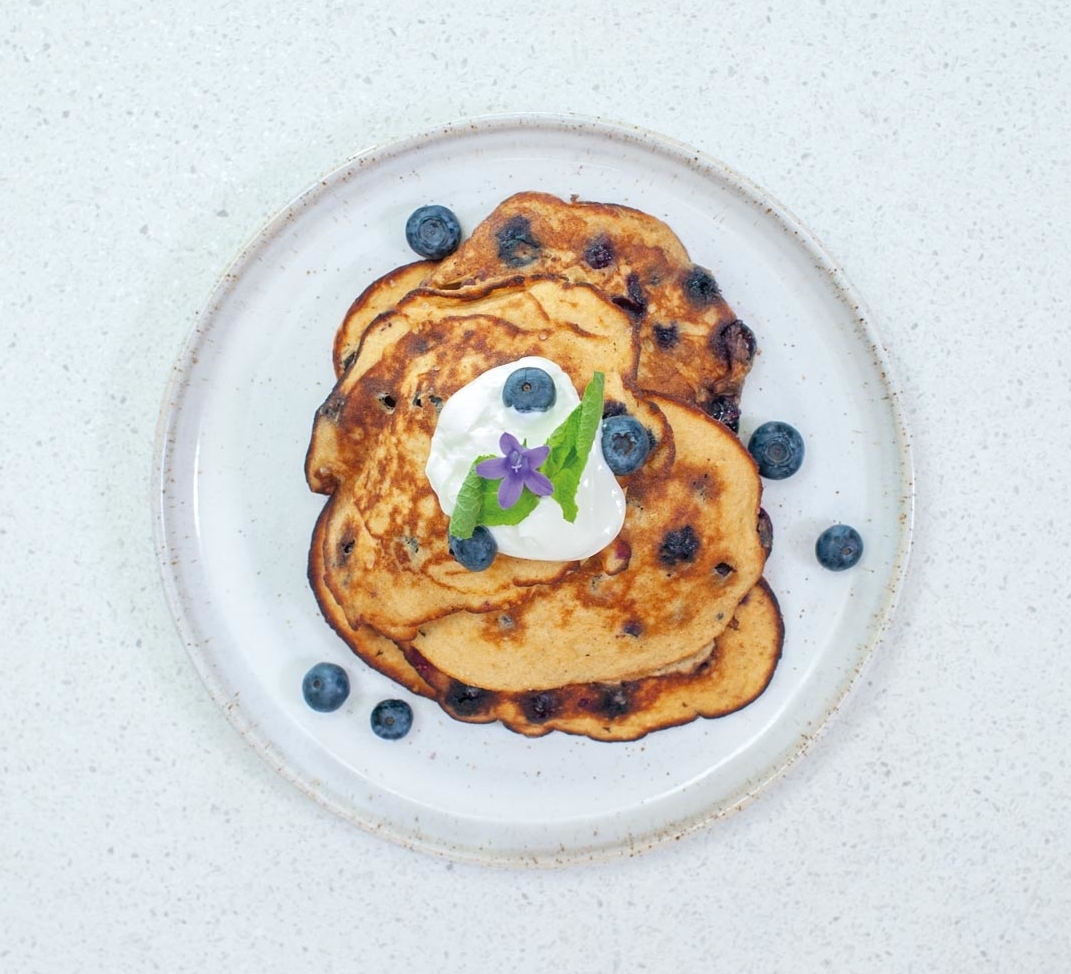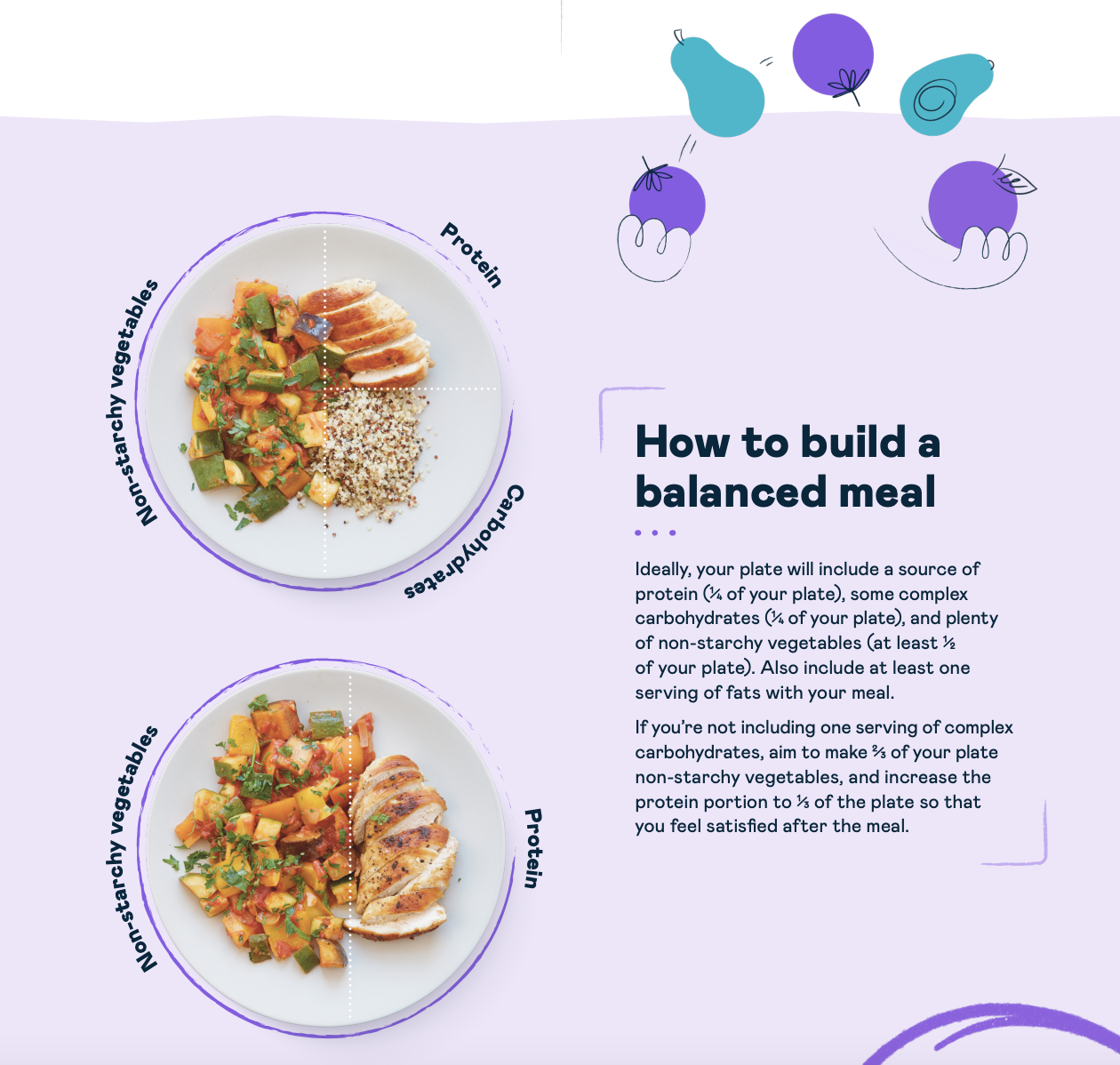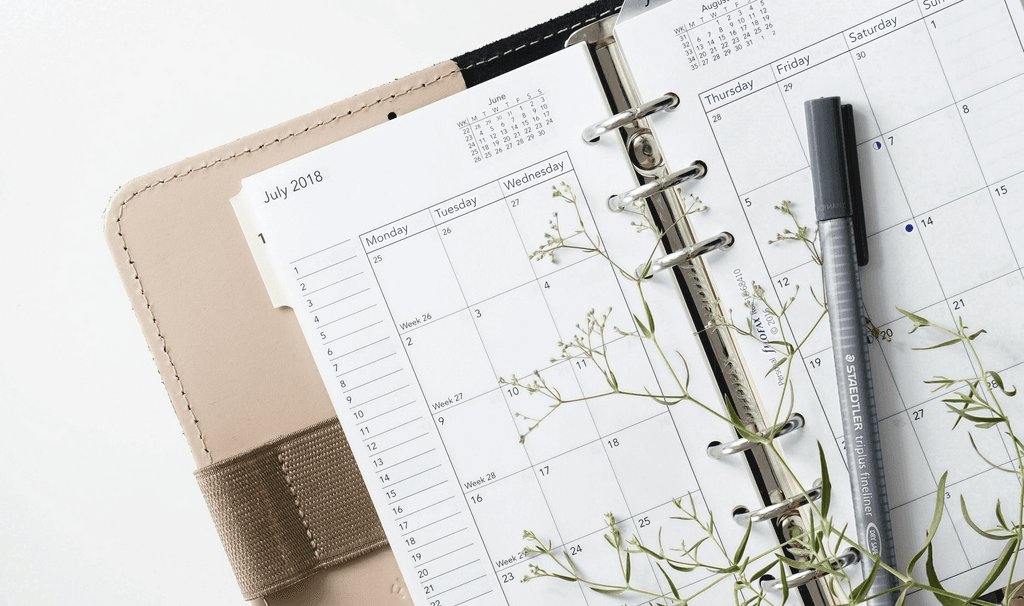Fad diets all claim to be the simple answer to losing weight. Unfortunately, science says that there’s no such thing as a magic diet that results in healthy weight loss.
Conflicting advice makes it difficult to make a realistic, healthy eating plan that fits into your daily life.
Rather than calorie counting, the best way to lose weight is to make lifestyle changes and build healthy habits. Healthy habits could be learning to meal plan, discovering what healthy foods you like or dislike, and, eventually, incorporating various healthy foods into your diet. All of this will make maintaining lifestyle changes and losing weight more achievable.
Low calorie and low-fat diets often leave you feeling deprived and hungry, which is not sustainable in the long term. We digest proteins and fats more slowly than carbs. Due to this, increasing intake of protein and healthy fats can result in feeling fuller for longer, which is helpful for weight management.
At the same time, swapping some carbs for non-starchy vegetables can leave you feeling satisfied while reducing your overall calorie intake. This is the primary rationale for a low-carb diet to lose weight (add a link to low carb diet). A low carb diet also has other health benefits, including for type 2 diabetes.
There’s no need to eliminate food groups entirely. When we create too much restriction in our diet, we’re more likely to ‘fall off the wagon’ and return to our old eating habits. At Second Nature, no foods are off-limits but we follow a lower-carb approach based on its success in long term weight loss.
Second Nature was the first programme to be commissioned by the NHS for long term lifestyle change and weight loss. We’re a tried and tested, NHS approved programme that will support you on your journey to better habits.
Medication-assisted weight loss with a future focus
Start with Mounjaro, transition to habit-based health with our support

Meal ideas
Devised by our registered dietitians and nutritionists, here are five different ideas for breakfast, lunch, and dinner that could be part of a satisfying low-carb diet plan.
Remember that the best plan is one that you can stick to, so substitute ingredients you don’t like for others and adjust meals to suit any dietary requirements.
Options suitable for vegetarians are highlighted with a (v). You can access full recipes and instruction videos of example meals by clicking on the meal you want to make.
| BREAKFAST IDEAS | 200g plain, unsweetened Greek yogurt with berries and sliced almonds (v)
Eggs your way + avocado (slice or mash ¼ of an avocado on 1 slice of wholegrain toast) (v) 2-3 egg mushroom omelette with 30g grated cheese and an optional slice of wholegrain bread (v) |
| LUNCH IDEAS | Courgette frittata slice + green salad (v)
Small jacket potato with a can of tuna + salad Wholegrain wrap with roast beef/ chicken/ham, mustard and salad or Falafel, yogurt and salad (v) Leftovers from dinner |
| DINNER IDEAS | Goulash soup
Warm lamb, or falafel (v), salad Coconut dahl (v) Meatballs in chilli and tomato sauce + salad Mediterranean quinoa with 2 tbsp plain, unsweetened Greek yogurt (v) |

Example 7-day meal plan
The following week plan is an example of how you could use the meal ideas above to structure your food and successfully begin your weight loss journey. Complete recipes and instruction videos of the example meals are available by clicking on the meal you want to make.
Not all meals in this example plan are suitable for vegetarians, but You can make ingredient swaps or substitutes with meal ideas highlighted with a (v) from above to cater to your requirements. We also have lots more vegan and vegetarian healthy recipes that you could swap in.
This meal plan includes some simple ‘quick prep’ sections throughout the week that shouldn’t take more than 5 minutes. To save time, you can pre-prep the courgette frittata slices and lemon salad dressing (olive oil and lemon juice).
Making a shopping list ahead of time will not only save you time and money, it means you’re less likely to give in to cravings in the shop and end up buying less healthy options.
| BREAKFAST | LUNCH | DINNER | |
| MONDAY | 200g plain, unsweetened Greek yogurt
(Optional toppings: berries and sliced almonds) |
Courgette Frittata slice +
Salad (2x handfuls of baby spinach, 1 tomato, ¼ cucumber, ½ chopped red pepper, pre-prepped lemon salad dressing) |
Goulash soup
Quick prep: put one serving of leftover soup in the fridge for lunch tomorrow and the rest in the freezer. |
| TUESDAY | Eggs your way +
Avocado (Slice or mash ¼ of an avocado on 1 slice of wholegrain toast) |
Goulash soup (leftover) | Mediterranean quinoa
(Optional topping: 2 tbsp Greek yogurt) Quick prep: put leftover servings into containers for lunch on Thursday. |
| WEDNESDAY | Very berry smoothie
Quick prep: make a salad similar to Monday and put in a container with a serving of Frittata vegetable slice (leftover) for lunch. |
Courgette frittata slice (leftover) + Salad | Coconut Dahl
(Optional toppings: 2 tbsp Greek yogurt and 2 tbsp roughly chopped parsley) Quick prep: Put leftover dahl into a container in the fridge for dinner Friday. |
| THURSDAY | Mushroom omelette (2-3 eggs) with 30g grated cheese
(Optional: serve with a slice of wholegrain bread) |
Mediterranean quinoa (leftover)
(Optional topping: 2 tbsp Greek yogurt) |
Warm lamb salad
Quick prep: Put leftover lamb salad into containers for lunch and prep overnight oats (40g) for tomorrow breakfast. |
| FRIDAY | Pre-prepped overnight oats
(Optional toppings: 200g Greek yogurt, a handful of berries, or a handful of nuts) |
Warm lamb salad (leftover) | Coconut dahl (leftover)
(Optional toppings: 2 tbsp Greek yogurt) |
| SATURDAY | Blueberry oat pancakes
Quick prep: defrost a serving of goulash soup if you’re eating lunch at home today. |
Eating out (opt for a meal with lots of non-starchy vegetables and a good source of protein)
OR Goulash soup (leftover) |
Meatballs in chilli tomato sauce +
Salad Quick prep: store leftover meatballs in a container in the fridge. |
| SUNDAY | Scrambled eggs (2-3 eggs)
(Optional: 1 grilled tomato, 1 handful baby spinach, 2 rashers of back bacon) |
Peri-Peri chicken + vegetables
Quick prep: put any leftovers into containers for quick and easy meals next week. For example, you could add leftover chicken to a salad, or use the leftover vegetables as a basis for another meal. |
Meatballs in chilli tomato sauce (leftover)
(Optional: serve in a wholemeal wrap with baby spinach, red onion, and feta cheese) |
| OPTIONAL SNACKS
100g Greek yogurt with a handful of berries (v) ½ – 1 blueberry oat pancake (v) ½ – 1 courgette frittata slice (v) Veggie sticks with 60g hummus (v) 1-2 hard-boiled eggs (v) 1-2 meatballs in chilli tomato sauce |
|||
How to create your own diet plans
Before you attempt any meal planning, it’s crucial to have a basic understanding of food. Having this will help you to ensure that you have a balanced diet.
Nutrition basics
When we look at the nutritional requirements that our body needs to survive and function, we can broadly break these requirements into macronutrients and micronutrients (vitamins and minerals). There are three kinds of macronutrients found in our foods: protein, fat, and carbohydrates.
Most foods contain some of all three macronutrients. However, we usually categorise foods based on their primary macronutrient.
| PROTEIN | FAT | CARBOHYDRATES | |
| Function | Helps your body grow, maintain, and repair itself. Helps you to build muscle and stay strong.
Added benefit of helping you to feel full, as it takes longer to digest |
Critical for human survival. Used in your body to build the walls of your cells, allowing your brain and nervous system to function and produce hormones.
Added benefit of helping you to feel full, as it takes longer to digest. |
Source of energy for your body. Any extra energy that isn’t used straight away is stored and kept as a reserve. (For many of us living sedentary lifestyles, we don’t need much reserve energy!)
Choose complex carbs, which are very high in fibre. Fibre helps food move through our digestive system and helps you to feel full. |
| Healthy Examples | Chicken
Beef Fish Lentils Eggs Cheese Tofu |
Extra virgin olive oil
Nuts Seeds Salmon Avocado Olives |
Quinoa
Sweet potato Oats Wholegrain bread Wholewheat pasta Buckwheat Apples |
| NON-STARCHY VEGETABLES
These foods technically contain carbohydrates, but are very low in starch/sugar and mostly made up of fibre and water. They also provide vitamins and minerals:
|
|||
Now that you have a basic understanding of the nutritional content of food, let’s put it all together! Aim to eat three balanced meals a day and space them evenly throughout your schedule.
Is there anything to avoid?
Occasional treats and indulgences are part of a healthy lifestyle. There’s no need to restrict yourself entirely, as research shows this is likely to result in increased cravings and even bingeing on the ‘banned’ food.
However, certain foods are engineered by the food industry to keep us coming back for me. They override our internal stop signals (which tell us when we’re full and no longer need to eat) which means we’re more likely to overeat and keep coming back for more.
Examples include ice cream, crisps, biscuits, takeaways, and cakes. Although you can enjoy these occasionally, remember that these foods are designed to be irresistible so enjoy them mindfully and be aware of your portion sizes.
What about exercise?
Diet is the most critical factor in weight management. But we can increase our chances of weight loss by including regular physical activity in our day. It doesn’t need to be extreme, especially if you’re starting out. But, walking can be a great starting point for your weight loss journey.
Similarly, incorporating small ‘snacks’ of exercise (such as squats whilst brushing your teeth, or star jumps while waiting for the kettle to boil) can increase your energy expenditure without cutting into your spare time.
Top 10 tips
Kicking pre-existing unhealthy eating habits can be hard. These 10 top tips can help you overcome unhealthy cravings, or dependence on ultra-processed foods, and effectively create your own healthy meal plans:
- Have at least half a plate of vegetables at every meal (e.g. carrots, courgette, peas, peppers)
- Add a serving of fats to each meal (e.g. tbsp of extra virgin olive oil or a small handful of nuts)
- Include a good source of protein at each meal – a serving that is at least ¼ of your plate (or the size of the palm of your hand)
- Swap refined carbohydrates (like white bread and rice) for whole-grain versions (like brown rice and quinoa)
- Include fruit as part of your balanced diet. If you’re having fruit as a snack, try pairing it with a source of protein or fat (for example, an apple with nut butter)
- Base your meals on whole foods, rather than refined carbohydrates, ultra-processed foods, and foods with added sugar
- Cook most of your meals at home – some people find it useful to plan and prepare their meals ahead of time
- If you want something sweet, try having a piece of high quality (75%+) dark chocolate and take the time to enjoy it
- Drink at least 2 litres (6-8 glasses) of water per day
- Swap fruit juice, fizzy drinks (regular and diet), energy drinks, and alcohol for sparkling or still water, or water flavoured with lemon or lime

It is worth noting that these top tips provide general information and should not be used to substitute medical advice, especially if you suffer from a medical condition, in which case you should consult a medical professional before attempting a new diet plan.

